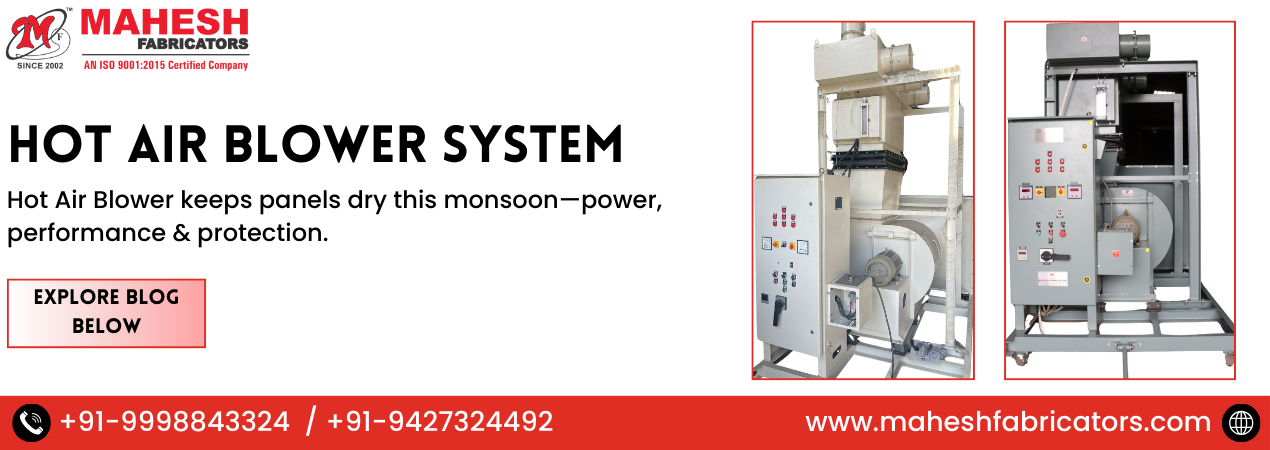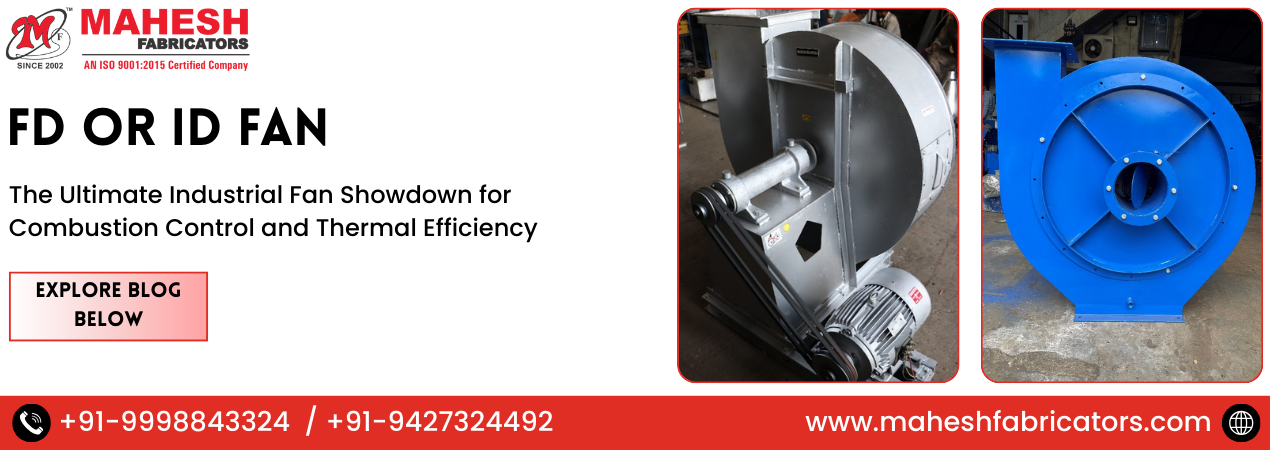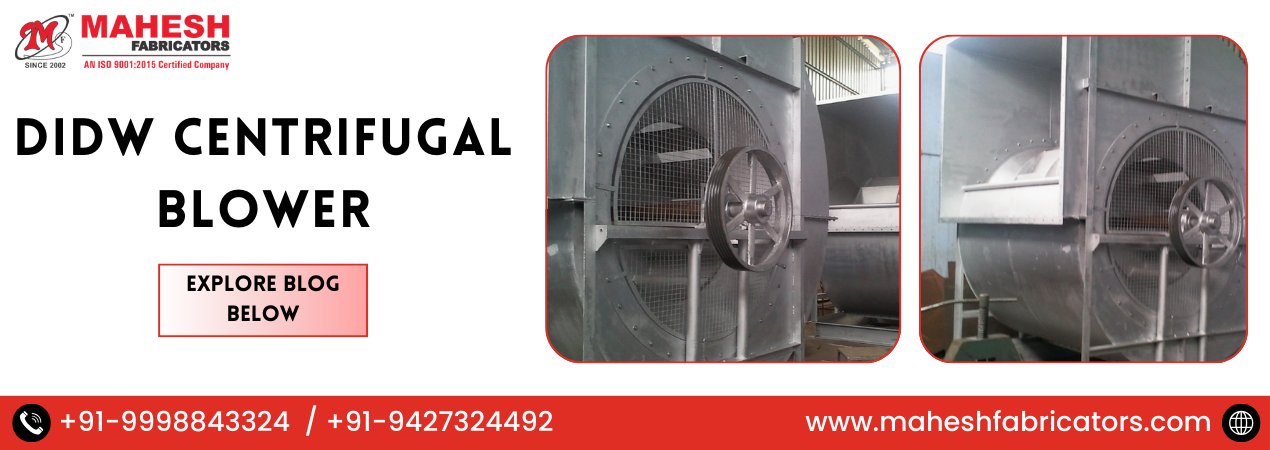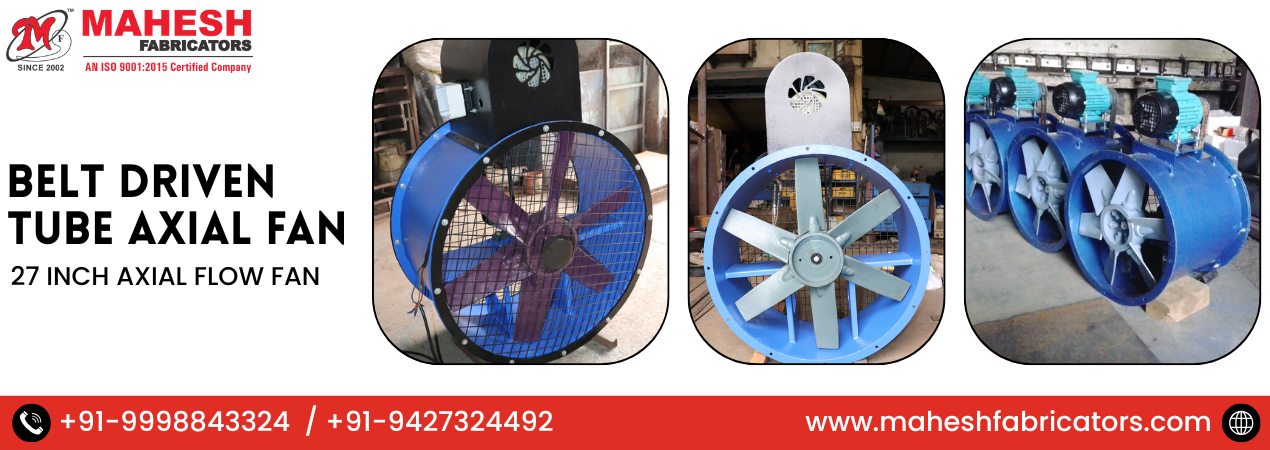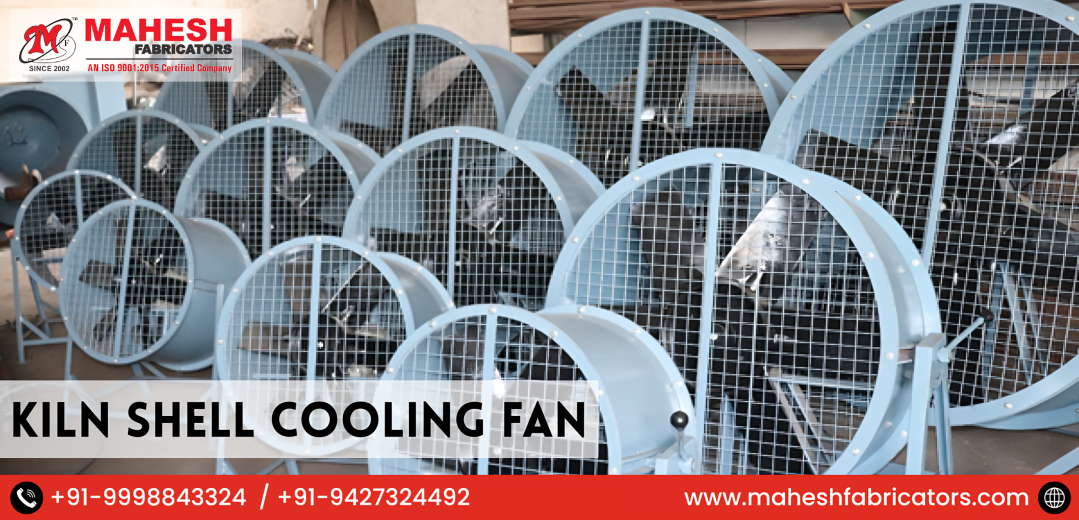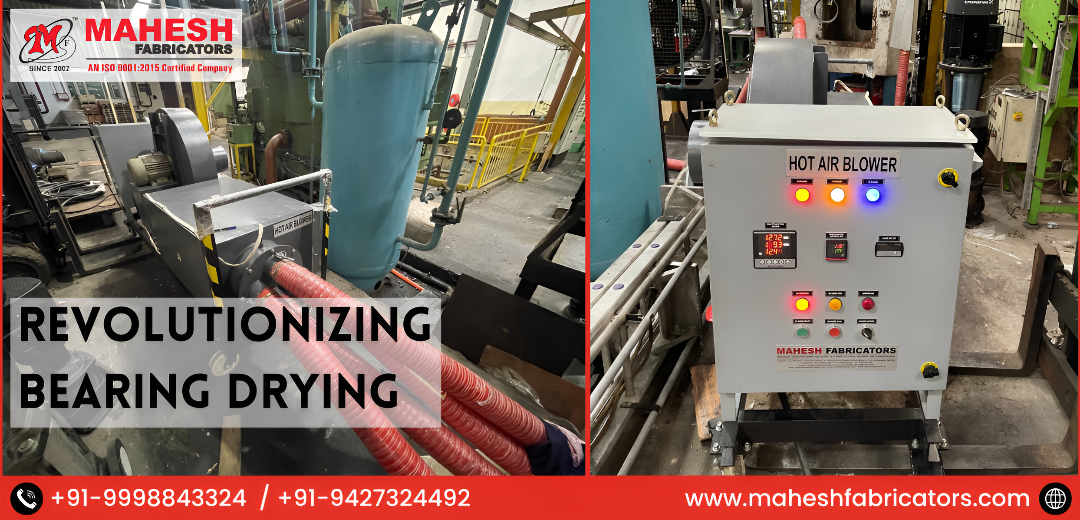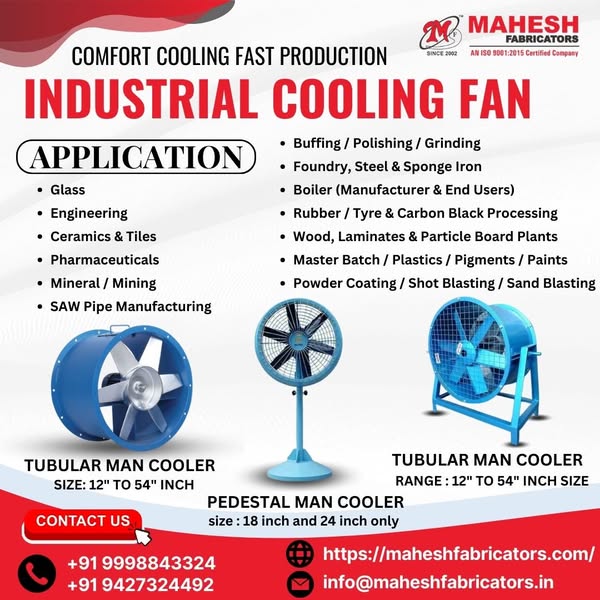
Industrial Cooling Fan: Features, Applications, Uses
Overview
Industrial cooling fans are designed to provide high-volume airflow to regulate temperature, remove excess heat, and maintain optimal operating conditions in large spaces like factories, warehouses, data centers, and processing plants. These fans are built for durability, efficiency, and high-performance cooling.
Best Features of an Industrial Cooling Fan
1. High Airflow Capacity
-
Designed to move large volumes of air efficiently.
-
Helps in maintaining uniform temperature distribution.
2. Energy Efficiency
-
Uses energy-saving motors such as EC (Electronically Commutated) motors or Variable Frequency Drive (VFD) motors to optimize power consumption.
3. Durability and Robust Construction
-
Built with heavy-duty materials like stainless steel, aluminum, or reinforced ABS plastic to withstand harsh industrial environments.
-
Resistant to dust, moisture, and extreme temperatures.
4. Adjustable Speed and Direction
-
Many industrial fans feature multiple speed settings and oscillation options to maximize cooling efficiency.
5. Low Noise Operation
-
Some models feature noise-reducing blades and vibration dampeners for quieter operation in workspaces.
Applications of Industrial Cooling Fans
-
Manufacturing & Processing Plants
-
Reduces heat generated by heavy machinery.
-
Prevents overheating and equipment failure.
-
-
Warehouses & Storage Facilities
-
Maintains consistent airflow for proper ventilation.
-
Prevents heat buildup that can damage stored goods.
-
-
Data Centers & Server Rooms
-
Keeps IT equipment cool to prevent overheating and system failure.
-
-
Agriculture & Livestock Facilities
-
Provides ventilation in poultry farms, dairy barns, and greenhouses to maintain a controlled environment.
-
-
Automotive & Aerospace Industry
-
Helps cool production lines, painting booths, and testing areas.
-
-
Food & Beverage Industry
-
Ensures proper ventilation in food processing areas to comply with safety regulations.
-
-
Chemical & Pharmaceutical Plants
-
Controls airborne contaminants and maintains a safe working environment.
-
-
Construction & Mining Sites
-
Provides air circulation in enclosed or underground workspaces.
-
Common Uses of Industrial Cooling Fans
-
Heat Dissipation: Prevents overheating of machinery and equipment.
-
Ventilation: Removes stale air and replaces it with fresh air.
-
Humidity Control: Helps in reducing excess moisture in the air.
-
Air Quality Improvement: Removes airborne dust, fumes, and pollutants.
-
Worker Comfort: Provides a comfortable working environment, improving productivity.
Frequently Asked Questions (FAQs)
1. How do I choose the right industrial cooling fan?
Answer: Consider factors like airflow capacity (CFM), motor efficiency, mounting type, noise levels, and the specific needs of your industrial space.
2. What is CFM, and why is it important?
Answer: CFM (Cubic Feet per Minute) measures airflow capacity. A higher CFM means the fan can move more air, which is essential for large industrial areas.
3. Can industrial cooling fans be used outdoors?
Answer: Yes, weather-resistant models are available for outdoor applications, featuring rust-proof materials and waterproof components.
4. Are industrial cooling fans energy efficient?
Answer: Many models use energy-efficient motors (EC or VFD) to reduce electricity consumption while maintaining powerful airflow.
5. How often should industrial fans be maintained?
Answer: Regular maintenance, including cleaning blades, checking motor function, and inspecting wiring, should be done every 3 to 6 months to ensure efficiency and longevity.
6. Can industrial cooling fans be used with air conditioning?
Answer: Yes, they improve air circulation and help distribute cool air evenly, reducing the overall load on the air conditioning system.
